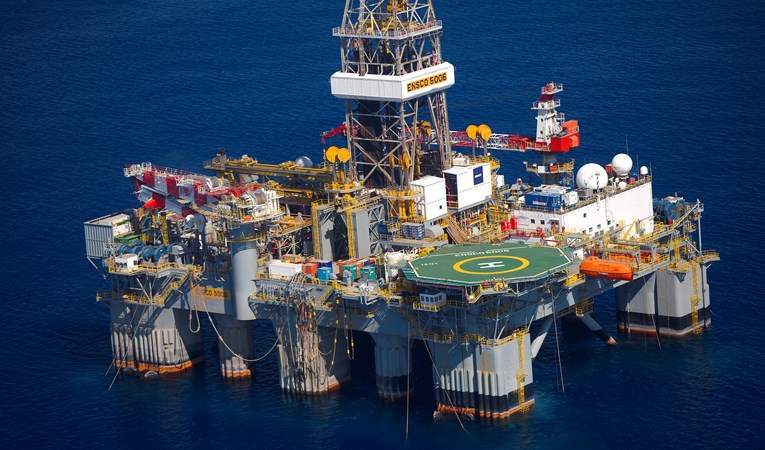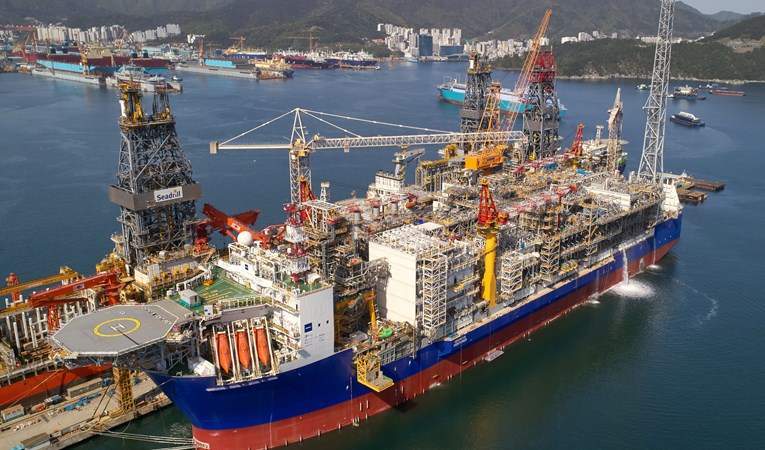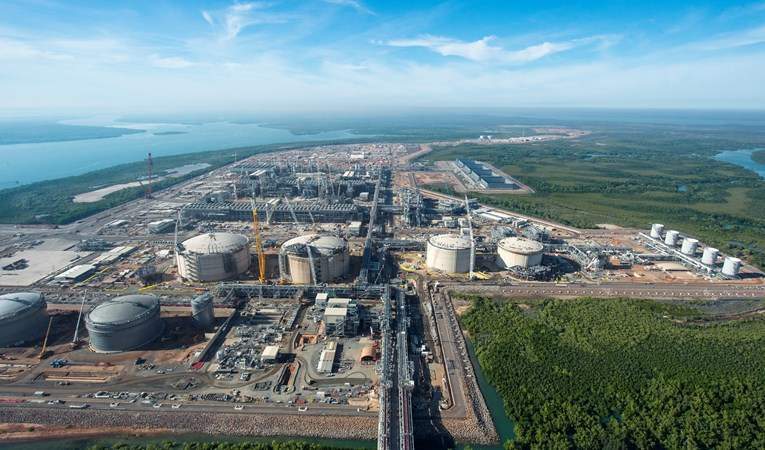Ichthys LNG project, which involved the development of Ichthys gas-condensate field located approximately 220km offshore Western Australia, is one of the world’s biggest liquefied natural gas (LNG) projects.
Developed with an estimated investment of $40bn, the Australian LNG project is expected to produce 8.9 million tonnes (Mt) of LNG and 1.6Mtof liquefied petroleum gas (LPG) a year, in addition to up to 100,000 barrels of condensate a day over its 40 years of operational life.
The mega LNG project is owned by its operator INPEX (66.245%), Total (26%), CPC Corporation Taiwan (2.625%), Tokyo Gas holding (1.575%), Osaka Gas (1.2%), Kansai Electric Power (1.2%), JERA (0.735%) and Toho Gas ( 0.42%).
Ichthys commenced commercial production and started condensate and LNG shipments in October 2018.
Project Gallery
-

Ichthys gas-condensate field is located approximately 220km offshore Western Australia. Image courtesy of Inpex.
-

Ichthys central processing facility is one of the world’s largest semi submersible platforms. Image courtesy of Inpex.
-

Ichthys FPSO has a storage capacity of 1.12 million barrels of condensate. Image courtesy of Inpex.
-

The Ichthys onshore LNG processing facility at Bladin Point is connected with the offshore field via a 890km gas export pipeline. Image courtesy of Inpex.
Ichthys gas field discovery and reserves
Discovered in 2000, the Ichthys offshore LNG field covers approximately 800km² in the Browse Basin off the northern coast of Western Australia in 250m-deep waters.
The offshore field is estimated to contain more than 12.8 trillion cubic feet of gas and 500 million barrels of condensate at depth up to 4,500m beneath the seabed.
It is considered to be the biggest liquid hydrocarbon discovery in Australia’s 40-year history.
Ichthys LNG project development details and history
The Ichthys LNG project development plan includes 50 subsea production wells, a permanently moored semi-submersible central processing facility, and a floating, production, storage and offloading facility (FPSO) for offshore processing of condensates.
Further, an onshore LNG terminal at Bladin Point near Darwin, and an 890km of gas export pipeline connecting the onshore and offshore facilities have been built.
Production license for Ichthys LNG project was issued by the Australian Government in March 2012. The final investment decision (FID) for the project was approved in May 2012. Construction on the LNG project was officially started in the same month.
Commissioning of all key onshore and offshore facilities for the start of production was completed in May 2018.
The 100th shipment of LNG from the facility took place in November 2019.
Ichthys central processing facility details
The column-stabilized Ichthys CPF, named Ichthys Explorer, permanently moored near the field, performs the initial processing of well flows to extract condensate and remove impurities from gas. The extracted condensate is sent to the FPSO, while the gas is sent to the onshore LNG terminal at Darwin through the gas export pipeline.
The CPF also houses utilities and living quarters for approximately 200 people.
Ichthys CPF weighs 122,000t, while its topsides measuring 130mx120m, making it the world's biggest semi-submersible platform.
The Ichthys CPF vessel built at Samsung Heavy Industries shipyard in South Korea reached Australia in May 2017 and was moored at the offshore field in June 2017 with the help of 28 mooring lines comprising 25,000t of anchor chains.
Details of the Ichthys FPSO
The FPSO vessel Ichthys Venturer is permanently moored 3.5km away from the Ichthys CPF for processing, storage and offloading of condensate delivered from the CPF. Ichthys Venturer has a storage capacity of 1.12 million barrels of condensate.
The 336m-long and 59m-wide FPSO was built at Daewoo Shipbuilding & Marine Engineering shipyard in Okpo, South Korea, and moored at the offshore site in August 2017 with 21 pre-installed mooring chains weighing more than 15,000t.
Ichthys gas export pipeline details
Ichthys offshore and onshore facilities are connected through an 890km-long and 42in diameter gas export pipeline. The pipeline is made of 550,000t of concrete and 700,000t of steel.
The first 18km of the pipeline through Darwin Harbour and the 164km shallow water section of the pipeline were laid with the help of Saipem’s semi-submersible pipelay barge SEMAC-1.
Saipem’s deep-water installation vessel Castorone was used for laying the remaining 718km of the pipeline connecting the offshore field.
Ichthys onshore LNG plant
Built on a 361-hectare site at Bladin Point, the Ichthys onshore LNG processing facility comprises two LNG processing trains, product storage tanks, condensate and LPG plants, a 500MW combined-cycle power plant and a product load-out jetty.
Condensate and LPG are separated from the natural gas arriving at the onshore facility via the gas export pipeline from the offshore field. The remnant natural gas is cooled to -162°C using two LNG trains, to obtain liquefied natural gas (LNG) for transportation through the product load-out jetty.
Ichthys LNG supply agreement
Two 15-year LNG sales and purchase agreements (SPA) were finalized in December 2011 and January 2012 respectively for the sale of LNG produced at the project.
The customers include Tokyo Electric Power (1.05Mtpa), Tokyo Gas (1.05Mtpa) and Kansai Electric Power (0.8Mtpa), Osaka Gas (0.8Mtpa),Kyushu Electric Power (0.3Mtpa),Total Gas & Power (0.9Mtpa), INPEX (0.9Mtpa), CPC Corporation (1.75Mtpa), Chubu Electric (0.49Mtpa) and Toho Gas (0.28Mtpa).
Japanese utility companies purchase approximately 70% of the total LNG output of the project.
Financing for Ichthys LNG project
Ichthys LNG project was financed through loan arrangements worth $20bn finalised in December 2012.
The loans included direct loans worth $5.8bn from eight export credit agencies (ECAs) led by Japan Bank for International Cooperation (JBIC), which alone provided $5bn, commercial loans worth $10.2bn by 24 commercial banks, and $4bn senior sponsor loans from the Ichthys LNG project partners.
Contractors involved with Ichthys offshore facilities
AMEC Engineering was awarded the front-end engineering and design (FEED) contract for the Ichthys offshore facilities in April 2009.
AMEC subcontracted the CPF and FPSO hull FEED engineering work to Aker Solutions and that of the pipeline and umbilicals, risers and flowlines to JPKenny.
Daewoo Shipbuilding and Marine Engineering (DSME) was awarded the $2bn turnkey contract for the FPSO vessel Ichthys Venturer in March 2012.
DSME subcontracted Norwegian Piping in January 2013 for the supply of pipe, fittings and flanges for the FPSO.
Samsung Heavy Industries (SHI) received the $2.71bn engineering procurement and construction (EPC) contract for the semi-submersible CPF vessel Ichthys Explorer in February 2012.
Technip was awarded the detailed engineering and procurement assistance contract for the Ichthys FPSO topsides in June 2012.
Three months later, the company was awarded another contract worth $243m for the preparation and execution of the offshore commissioning of Ichthys FPSO and the central CPF.
SHI appointed ABB as the main electrical contractor (MEC) for the CPF project in March 2013.
Murray & Roberts subsidiary Clough was subcontracted for the CPF hook-up services in January 2016.
POSH Terasea Offshore was responsible for the 5,600km towing of Ichthys Venturer and Ichthys Explorer vessels from South Korea to the Ichthys field.
Aqualis Offshore provided the position-keeping services for the Ichthys FPSO.
Monadelphous was also awarded long-term offshore maintenance service contract for the Ichthys project in May 2017.
Contractors involved with Ichthys onshore LNG processing facility
The onshore FEED contract for the Ichthys LNG project was awarded to JKC, a joint venture (JV) between US-based company Kellogg Brown & Root (KBR), and Japan-based JGC Corporation and Chiyoda Corporation, in January 2009.
The JKC JV was also awarded the $15bn EPC contract for the onshore facilities in February 2012. GE Oil & Gas provided the turbines and compressors used at the onshore facility.
CH2M HILL-UGL JV designed and supplied the balance of plant for the 500MW Ichthys combined-cycle power plant and was responsible for its construction.
ABB received an $80m contract in 2012 to supply power technologies and medium-voltage drive systems for the onshore LNG processing plant.
Australian construction companies Macmahon Holdings and John Holland were awarded a $340m contract in March 2012 for civil construction works of the onshore facilities.
UGL-Kentz JV was responsible for the structural, mechanical and piping construction works for the LNG plant.
Monadelphous was awarded a $680mcontract by the JKCJV in February 2014 for piping, mechanical and structural steel works for offsite and utility areas of the onshore facility.
Contractors involved with the subsea works for Ichthys LNG project
Halliburton was awarded seven drilling and well completion services contracts for the next phase of Ichthys offshore field development in January 2020.
Saipem was awarded the $1.8bn engineering, procurement, construction and installation (EPCI) contract for the gas export pipeline of the project in January 2012.
Mitsui-Europipe, Sumitomo, and Nippon Steel-Metal One were responsible for manufacturing the gas export pipeline.
Bredero Shaw provided pipeline coatings for the gas export pipeline, flowlines and tie-in spools for the Ichthys LNG project.
McDermott Australia received a $2bn subsea contract in January 2012 for the EPCI and pre-commissioning of subsea umbilical, riser and flowlines (SURF) on the Ichthys field. The contractual scope also included the installation of moorings for the FPSO and CPF.
McDermott subcontracted Heerema Marine Contractors for transporting and installing infield flowlines, moorings and subsea structures for the project.
Technip was awarded the contract to supply flexible pipes including 3km of 10in diameter flexible gas export risers and 3km of 12in diameter production risers in April 2012.
GE Oil & Gas was awarded a contract worth more than $1bn in January 2012 to supply turbines and compressors for the onshore and upstream facilities as well as subsea production systems including 22 subsea production trees, five off-subsea manifolds, an integrated subsea control system, and subsea connectors for the 889km pipeline.
Subsea 7 was awarded the emergency pipeline repair contracts for the offshore project in July 2015.
Wood Group was awarded a five-year subsea engineering services contract for the integrity of the Ichthys LNG Project in September 2017.
Wood Group had also provided subsea engineering and project management services during the FEED phase of the project, whereas ATKINS had provided flow assurance and ad hoc process engineering services during the FEED phase.
